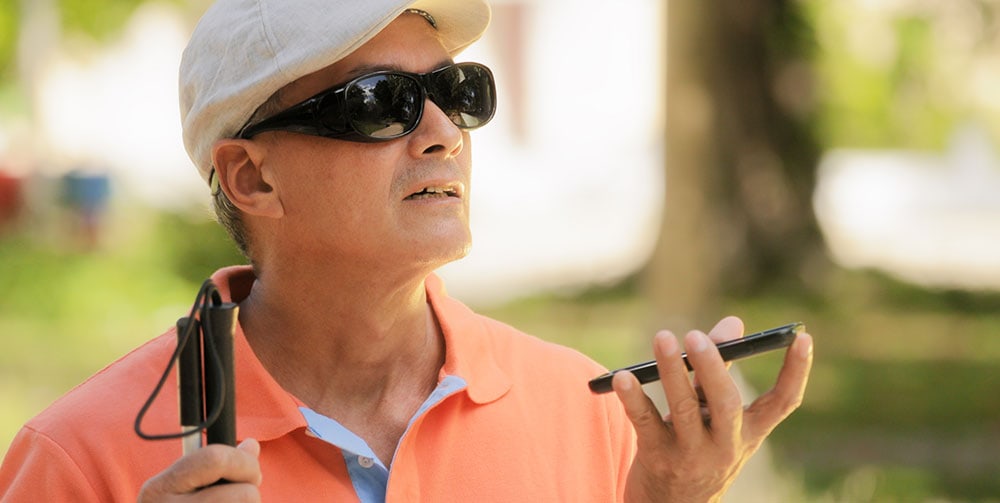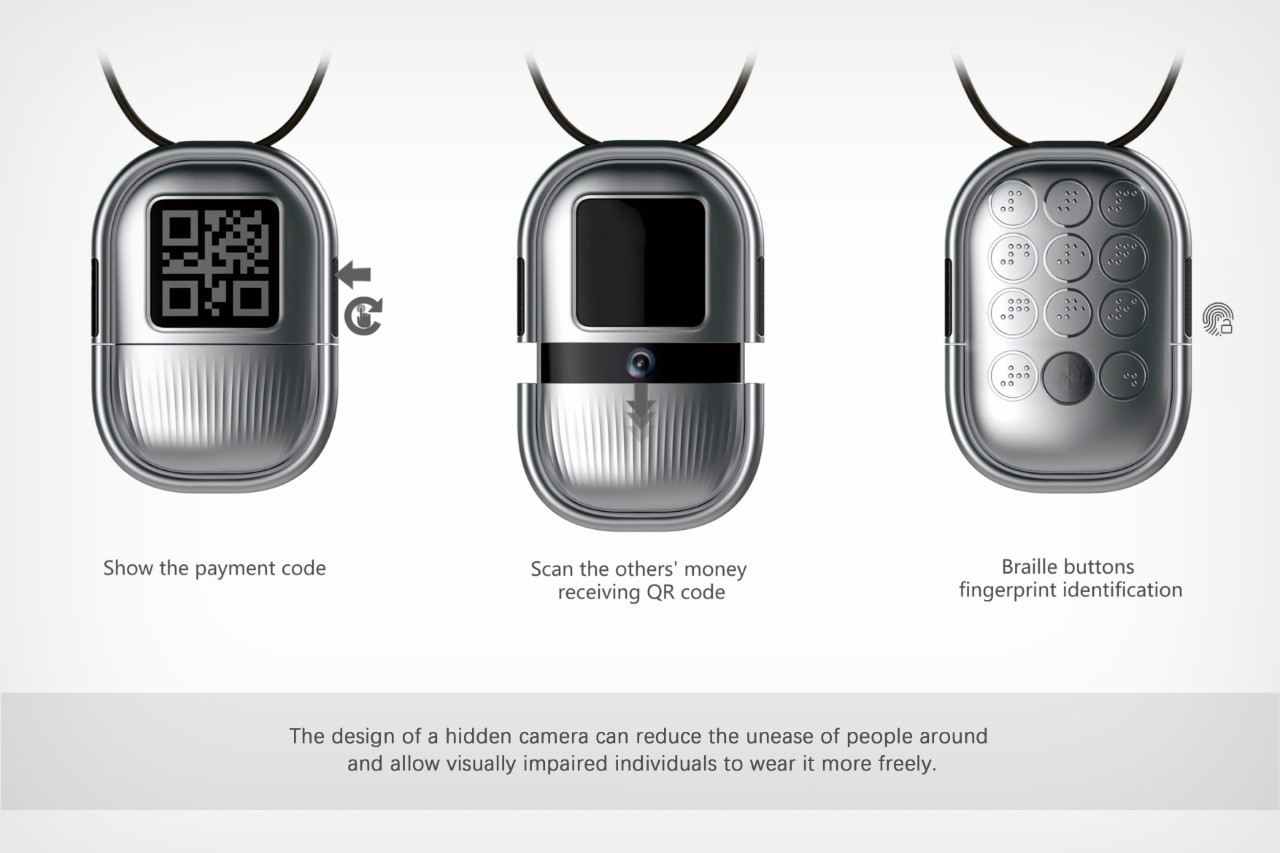OCR Devices for the Blind: Turning Print to Speech in Real-Time
OCR Devices for the Blind: Turning Print to Speech in Real-Time
Blog Article
Discover Cutting-edge Tools Made for the Visually Damaged
The development of innovative devices for the aesthetically impaired stands for a substantial advancement in accessibility and freedom. Technologies such as clever glasses with AI capabilities and mobile applications developed to supply acoustic summaries are reshaping day-to-day experiences for individuals.
Smart Glasses for Navigation

Smart glasses developed for navigating are reinventing the means aesthetically impaired individuals engage with their setting. These innovative tools make use of a mix of camera technology, expert system, and acoustic comments to provide real-time information regarding environments. By employing barrier discovery systems, clever glasses can inform users to prospective risks, allowing much safer movement in both familiar and unfamiliar settings.
The combination of GPS modern technology better boosts navigation capacities, enabling customers to obtain auditory instructions as they relocate. This hands-free strategy not only promotes freedom however also empowers aesthetically damaged individuals to navigate city landscapes with enhanced confidence. In addition, lots of wise glasses are geared up with attributes that recognize landmarks and road signs, providing contextual information that enhances the customer experience.
In addition, the advancement of these gadgets is constantly advancing, with business working to enhance the accuracy of things acknowledgment and expand the array of navigational functions. As smart glasses come to be much more budget-friendly and easily accessible, they hold the prospective to significantly change every day life for visually impaired customers. Ultimately, these cutting-edge devices represent an essential action toward inclusivity, offering boosted movement and a better sense of freedom for people navigating the globe around them.

Mobile Apps for Daily Living
Exactly how can mobile applications improve the every day lives of visually impaired individuals? Mobile apps are revolutionizing the way visually damaged customers navigate their environments, manage everyday jobs, and accessibility information. These applications offer vital support with various performances, cultivating independence and enhancing top quality of life.
Numerous ingenious mobile apps are made particularly for daily living. As an example, apps like Be My Eyes attach aesthetically impaired customers with sighted volunteers by means of video phone calls, allowing them to receive real-time aid with tasks such as reading tags or navigating unknown spaces. Seeing AI, established by Microsoft, uses synthetic intelligence to describe surroundings, reviewed message, and determine things, efficiently changing a smart device into a powerful tool for everyday aid.
Additionally, navigating applications customized for the aesthetically impaired, such as Aira and BlindSquare, provide audio-based instructions and ecological information, allowing individuals to traverse their environments safely and with confidence. Beyond navigation and immediate support, mobile applications additionally sustain organization and task management, with features that assist individuals establish suggestions, create to-do lists, and track appointments. In summary, mobile applications act as crucial sources, empowering visually impaired individuals to lead more independent and satisfying lives.
Wearable Technologies for Aid
Empowerment via modern technology is increasingly evident in the realm of wearable gadgets designed to assist visually damaged people. These ingenious devices integrate flawlessly into life, boosting navigating and providing crucial responses to users. For circumstances, clever glasses outfitted with electronic cameras can check out and acknowledge faces text out loud, permitting individuals to engage more confidently in specialist and social setups.
An additional significant improvement is the use of haptic comments systems in wearable devices. These systems utilize resonances or various other tactile signals to communicate info concerning the customer's setting, such as obstacles or adjustments in surface, improving mobility and safety and security. Wearable description innovations also consist of wristbands that link to smartphones, signaling individuals to notices through refined vibrations, hence boosting connection without dependence on aesthetic hints.
As these innovations remain to progress, they are not only boosting independence for aesthetically impaired people but additionally fostering a better sense of incorporation in society. By connecting the space between challenges dealt with in daily living and the capacity for freedom, wearable innovations offer as essential tools in the pursuit for equal rights and empowerment for those with visual disabilities.
Sound Description Devices
Audio summary tools play a critical role in improving accessibility for visually damaged individuals, supplying them with the capability to engage with visual media. Braille displays and notetakers. These devices supply narrated summaries of crucial visual elements in movies, tv programs, and live performances, ensuring that individuals can completely understand the context and feelings shared through visuals
Audio description can be incorporated right into numerous platforms, including streaming services, cinema testings, and live cinema. Several popular streaming services now include audio description as an availability feature, permitting viewers to select it easily. Along with traditional media, specialized apps additionally exist, providing audio descriptions for art exhibitions, museums, and other cultural events.
The effectiveness of audio summary rests on the ability of the storytellers, who must convey visual details succinctly without taking away from eyeglass frames the original sound. Innovations in this area are additionally leading the way for even more customized experiences, where customers can readjust the degree of information and pacing according to their choices.
Braille Innovations and Instruments
Braille tools and developments have actually significantly changed the way aesthetically impaired people communicate with message and info. Modern innovations have brought about the development of functional tools that boost literacy and freedom among individuals. Especially, Braille display innovations have actually progressed, allowing for dynamic analysis experiences. These tools convert electronic message into Braille, making it possible for users to access a vast array of info on computers, tablets, and smart devices.
In addition, mobile Braille notetakers incorporate traditional Braille input with modern functionalities, helping with note-taking, scheduling, and file modifying on the go. Voice-activated assistive devices. These portable tools often include text-to-speech capacities, linking the space between Braille and auditory information
Furthermore, ingenious Braille printers have emerged, permitting customers to create Braille labels, documents, and educational materials efficiently. This ease of access cultivates higher participation in expert and academic atmospheres, eventually promoting inclusivity.
In addition, research study into clever Braille modern technologies remains to expand. Gadgets that incorporate expert system are being explored to give real-time navigating support and contextual details, improving the individual experience in diverse setups. Generally, these developments mirror a commitment to empowering aesthetically impaired people through innovation, ensuring they can easily access and engage with the world around them.

Final Thought
The innovation of cutting-edge devices for the aesthetically damaged substantially enhances freedom and top quality of life. These modern technologies not just foster greater inclusion but additionally advertise autonomy in everyday tasks, eventually contributing to a more fair and easily accessible culture for visually damaged people.
As wise glasses become more inexpensive and accessible, they hold the possible to dramatically change everyday life for visually damaged individuals. Mobile applications are reinventing the method visually damaged users browse their atmospheres, manage day-to-day jobs, and access details. Apps like Be My Eyes connect aesthetically impaired users pop over to this site with sighted volunteers through video clip phone calls, allowing them to obtain real-time support with jobs such as checking out tags or navigating strange areas.In addition, navigating apps customized for the visually damaged, such as Aira and BlindSquare, provide audio-based directions and environmental details, making it possible for individuals to traverse their environments securely and confidently.The improvement of cutting-edge devices for the visually impaired significantly improves independence and high quality of life.
Report this page